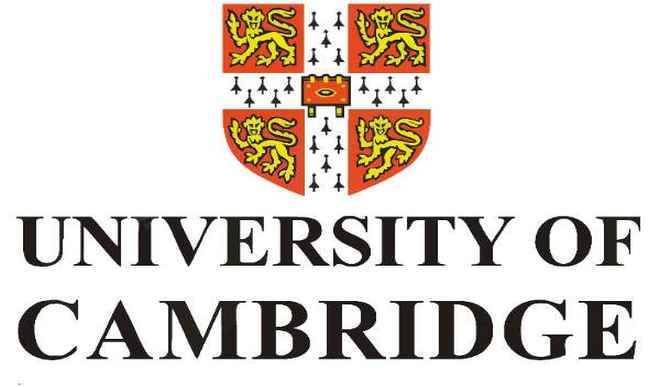Cambridge University, the leader in artificial intelligence research
The development of the world wide web, Skype, Spotify, etc., not withstanding, Europe is not as well known for high tech innovations as is the U.S., where most of the world’s high tech innovations have been developed – software of all sorts – operating systems, facial recognition, defense-originating dual-use technologies, the Internet, telephony, and so […]


The development of the world wide web, Skype, Spotify, etc., not withstanding, Europe is not as well known for high tech innovations as is the U.S., where most of the world’s high tech innovations have been developed – software of all sorts – operating systems, facial recognition, defense-originating dual-use technologies, the Internet, telephony, and so on. This is why it is at first surprising to learn that the world’s top high tech companies – Amazon, Apple, Microsoft, Softbank (Japan), and Samsung (South Korea) – are beating paths to Cambridge University in UK for their artificial intelligence (AI) solutions. This is counterintuitive; after all it is the case that Britain does not have the high tech wherewithal to sway the world in new tech directions. For that you’ll still have to look on to the U.S.
Why Cambridge University? For the past forty or so years, American universities, together with government contractors, have earned the reputation of being the best in avant-garde research and discoveries, fueling the U.S. military innovations, which, because of their intentional dual-use specifications, eventually end up in the hands of the ordinary consumer. Notable examples of such dual-use technologies include the cell phones and the Internet. American universities, particularly the so-called Ivy Leagues – Harvard, Cornell, Princeton, etc. – and other top non-ivies like Stanford, University of California at Berkeley, University of Michigan at Ann Arbor, Caltech, or MIT, are prominent in the production of graduates that go on to develop radical tech innovations. These universities are usually rated the best among world universities. So, why are Silicon Valley and U.S. top high tech companies heading to the UK for their AI innovations?
I know the American graduate education system has a few aspects that could potentially detract from true academic excellence. For example, the metrics used by most American schools for promoting and awarding tenure to their young professors encourage mediocrity in a sense. Your quality is gauged by the number – not necessarily the quality – of your journal publications. As a result, it is not uncommon these days to find a fresh doctoral graduate publishing more than fifteen, usually low-caliber journal papers that could conveniently be combined into a few nice ones. But then, 15 papers sound better than 2, especially in situations where most of your professorial colleagues may not even appreciate the caliber of the journals you publish in. There is also the issue of grants – that is, bringing in research money into your institution. Young professors do all sorts of things to obtain research funding so they can be promoted, usually working in areas they have no passion for. Another development I am seeing in American universities these days is the “tribal” factor, especially among recent immigrants to the U.S. These people tend to import their not-so-American “cultures” into the U.S. in ways that appear to defy proven American values in academe.
Can the foregoing observations explain why top U.S. companies are rushing to Cambridge University for AI solutions? Probably not! To be sure, this rush to Cambridge will probably embarrass top American institutions, since traditionally, British universities, at least post-industrial revolution, are not known for very applied science and engineering, the way American universities have operated for a long time. Or, is AI an outlier in the grand scheme of things? It seems so.
Contributing factors for the apparent superiority of Cambridge University in AI may as well be the long British legacy in this area of research. Cade Metz and Adam Satariano expatiated on this point in their 3 July 2018 article in The New York Times, with a particular reference made to Alan Turing, the British mathematician, computing pioneer, and computer code-breaker, who in 1950, wrote an essay on “Computing Machinery and Intelligence.” Another factor is the cheaper cost of labor in the UK compared to the U.S., with figures such as $78K/year in the UK, versus $142K/year in the U.S., for the same or even better talent in the UK.
Whatever the responsible factors, Cambridge University is certainly eating the lunch of top American institutions in AI. There are more than 4,500 high-tech firms in Cambridge, employing nearly 75,000 people. Microsoft is designing computer chips for artificial intelligence there, while engineers at Cambridge are pushing the boundaries of Siri, Apple’s digital assistant. The ARM, the semiconductor and software design Company owned by Softbank Group, the Japanese tech giant, maintains some presence in Cambridge, while Samsung is in the process of opening an artificial intelligence lab. Amazon Cambridge Development Center, among other activities, is where Amazon designs its flying drones. The Industrial Revolution, or the transition to new manufacturing processes, took place in the period from about 1760 to around 1830 A.D. It began in Great Britain, and many of the technological innovations of the time were of British origin. The then new manufacturing processes include transitioning from hand production methods to machines, development of new chemical manufacturing and iron production processes, the increasing use of steam power, the development of machine tools and the rise of the factory system. The British certainly contributed in a large measure to human civilization. They are also now becoming more relevant in high tech via the route of AI.
